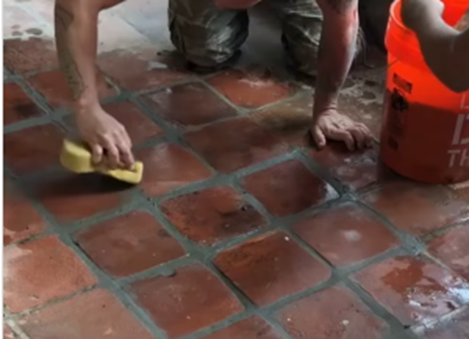
7 Important Treatment During Construction: A Complete Guide for Safe and Strong Buildings
Introduction: Why Treatments Matter in Construction
When you imagine building a new home, you probably think about floor plans, paint colors, or furniture. But behind the scenes, there are important steps that make sure your house lasts for years without constant repairs. These steps are called treatments, and they’re done during construction.
Skipping them can lead to problems like damp walls, termite infestations, or even fire hazards. Fixing these issues later costs much more than preventing them from the start. That’s why it’s so important to understand the 7 important treatment during construction. They protect your home, make it safer, and keep it strong for generations.
1. Anti-Termite Treatment: Protecting from the Ground Up
Termites are tiny, but their damage is massive. They eat through wood and furniture, and even damage structural parts of buildings. Once termites enter a house, getting rid of them is expensive and stressful. The best approach is prevention.
That’s why anti-termite treatment is one of the first steps in construction
The soil is treated with special chemicals before the foundation is laid. This creates a barrier that termites can’t cross. It protects wooden furniture, doors, windows, and even the building structure from attacks. Think of it as a shield for your home, keeping it safe from invisible enemies.
2. Waterproofing: Keeping Dampness Away
Water may look harmless, but in buildings, it causes serious trouble. When walls or roofs absorb moisture, they develop cracks, peeling paint, or mold. Dampness also makes a home unhealthy by allowing bacteria and fungus to grow.
Waterproofing treatment during construction stops this from happening
It’s usually applied to roofs, basements, and bathroom floors where water exposure is common. Modern waterproofing methods use coatings, membranes, or sealants that block water seepage. Doing this early ensures your walls stay dry and your home feels fresh. It’s much easier to prevent dampness than to fix it later.
3. Anti-Rust Treatment: Protecting Steel and Iron
Steel and iron are the backbone of any modern building. They’re used in reinforcement bars, window grills, and door frames. But these metals are vulnerable to rust when exposed to air and moisture. Rust weakens the structure and shortens the lifespan of a building.
To stop this, anti-rust treatment is applied
Coatings and paints are used on reinforcement bars before concrete is poured. Door and window frames are also treated to avoid corrosion. This simple step ensures that the hidden skeleton of your building stays strong and durable for decades.
4. Heat Insulation: Comfort and Energy Savings
Everyone wants a home that feels comfortable in every season. Without insulation, houses get too hot in summer and too cold in winter. This not only makes life uncomfortable but also raises electricity bills as you use fans, ACs, or heaters more often.
That’s why heat insulation treatment is essential
Materials like foam boards, reflective coatings, or insulating layers are added to roofs and walls. They reduce heat transfer, keeping indoor temperatures stable. Insulation is a silent helper—it saves energy, lowers bills, and creates a healthier living space.
5. Soundproofing and Insect-Proofing: Peace of Mind
Noise pollution is a common problem in cities. Loud traffic, neighbors, or construction can disturb peace at home. At the same time, insects like mosquitoes and cockroaches make daily life harder. Both problems can be solved with the right treatments.
Soundproofing is done by adding insulating layers to walls, ceilings, or windows. It creates a quieter indoor environment where you can rest or work without distraction. Insect-proofing uses mesh fittings, sealed joints, and chemical treatments
Together, these measures provide peace of mind—keeping noise and pests out while comfort stays in.
6. Grouting and Sealing of Joints: Closing the Gaps
Tiny gaps may not seem like a big deal, but they can lead to major problems over time. Spaces between tiles, around pipes, or in concrete joints allow water and dust to sneak in. This creates leaks, stains, and structural issues.
That’s why grouting and sealing of joints is one of the 7 important treatment during construction
High-quality grout fills gaps between tiles, while sealants protect joints in walls, floors, and basements. Proper sealing also blocks insects and prevents mold growth. Done right, this treatment ensures that your bathroom, kitchen, and floors stay strong and easy to maintain.
7. Fireproofing: Safety Against Hazards
Fire is one of the biggest risks in any building. While you can’t completely prevent accidents, you can reduce the damage they cause. Fireproofing treatments are designed to slow down fire spread and give people more time to escape safely.
During construction, fireproofing is done using special materials
Walls, ceilings, and wiring can be made fire-resistant with coatings, boards, or sprays. These measures don’t just protect property—they save lives. In today’s world, where safety is a top priority, fireproofing is a treatment that no builder should skip.
Bringing It All Together: A Safer, Stronger Home
Each of these treatments works in its own way, but together they form a safety net for your home. Anti-termite protection shields against pests. Waterproofing keeps dampness away. Anti-rust coatings protect the skeleton of the building. Insulation brings comfort, while soundproofing and insect-proofing create peace indoors. Grouting and sealing close the gaps, and fireproofing ensures safety in emergencies.
When combined, these 7 important treatment during construction give you a home that’s durable, comfortable, and secure. They may feel like extra steps, but they’re actually smart investments that save money and stress in the long run. Building a home is more than putting up walls—it’s about creating a safe space for your future.


















.jpg)
.jpg)
.jpg)

.jpg)
.jpg)
.jpg)
.jpg)

.jpg)
.jpg)
0 Comments